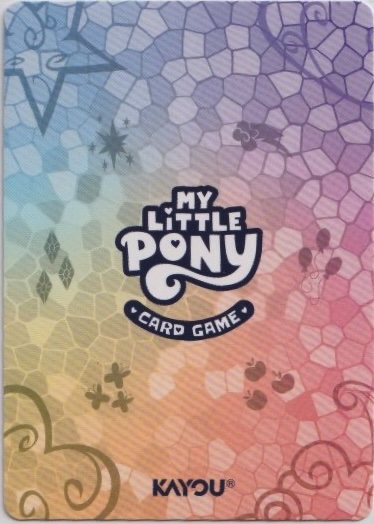Kayou’s officially licensed My Little Pony TCG is a colorful, story-driven card game currently only published in Chinese, but don’t let that stop you. With some light translation work and help from fans, this game is absolutely playable and surprisingly well-designed.
I opened a full Twilight Sparkle starter deck on YouTube, which gave me a firsthand look at how the gameplay unfolds. In this post, I’ll walk you through the core gameplay, card types, and how to get started, no Chinese required.
Table of Contents
- Where to Buy
- Game Objective
- Game Zones (Playmat Overview)
- Card Types
- Gameplay Loop
- Language Barrier Tips
- Final Thoughts
Where to Buy
Booster boxes contain 20 packs and currently retail for around $40. You can pick them up from trusted sellers like Anime Card Store using my AliExpress affiliate link.
Starter decks are the best entry point, they come fully playable with a pre-built deck based on one of the Mane Six, plus a physical playmat and full rules (in Chinese). These are often sold under listings like “Twilight Sparkle Starter Deck” or “MLP Kayou TCG Starter Kit.”
Game Objective
Each player brings a deck built around a central pony character. You win by completing story objectives (called “Story Cards”) or defeating your opponent by forcing them to run out of cards.
The core gameplay revolves around Adventure, Character, Scene, and Item cards, each with synergy and stats that interact in interesting ways. You’ll move through a multi-phase turn structure, using your cards to progress through story events while trying to outmaneuver your opponent.
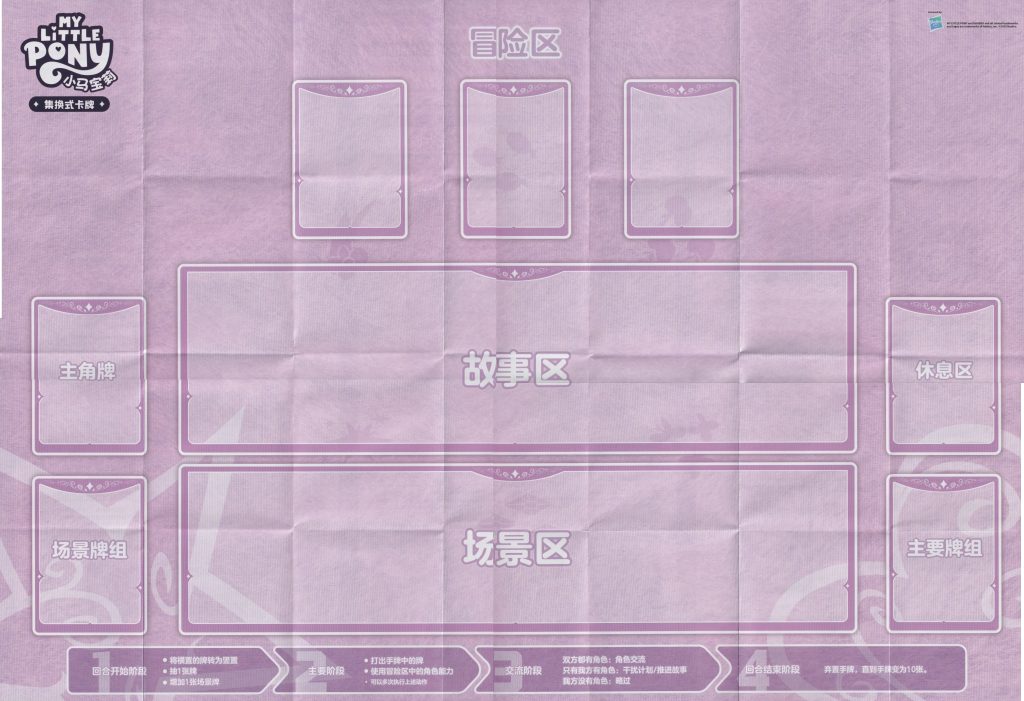
Game Zones (Playmat Overview)
The playmat divides into multiple zones:
- Adventure Zone (冒险区) – Where your current objectives play out
- Story Zone (故事区) – Where the active story cards are placed
- Scene Zone (场景区) – Ongoing environmental effects that influence play
- Main Deck (主要牌组) – Your draw deck
- Rest Area (休息区) – Where used or exhausted cards are placed
- Character Card (主角牌) – Your central pony for the game
- Scene Deck (场景牌组) – Location cards that influence battles and skills
You draw 5 cards at the start, then draw 1 per turn. Gameplay follows a set turn structure: Draw Phase → Main Phase → Exchange Phase → End Phase.
Card Types
🔹 Character Cards
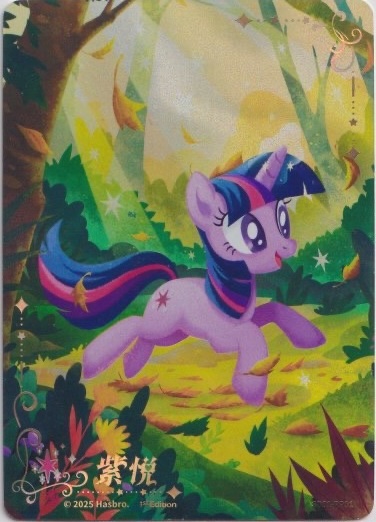
These are your ponies,Twilight Sparkle, Applejack, etc. each with stats for Courage, Wisdom, and Charm (used for completing challenges and battles). Many character cards have support skills and unique effects when paired with specific allies or items.
🔸 Persona Cards
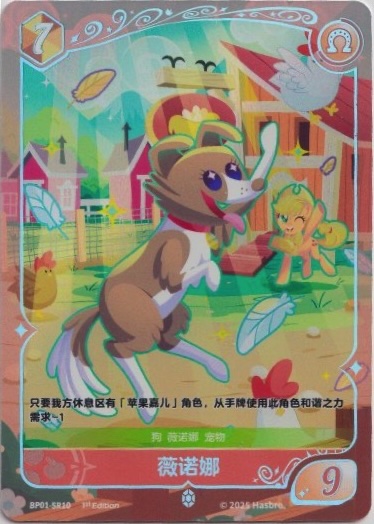
These special cards represent allies or alternate versions of your characters. They can provide passive benefits or unique trigger effects. For example, the Pinkie Pie card I pulled allows you to retrieve a card from your Rest Zone with a matching keyword.
🟪 Story Cards
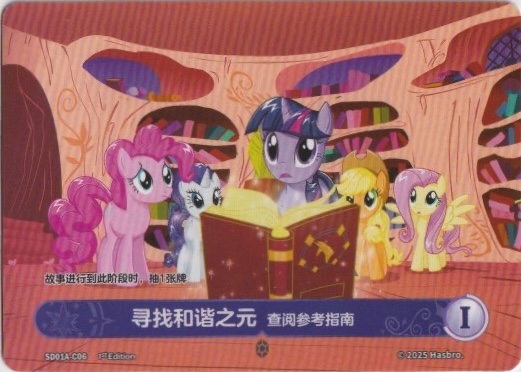
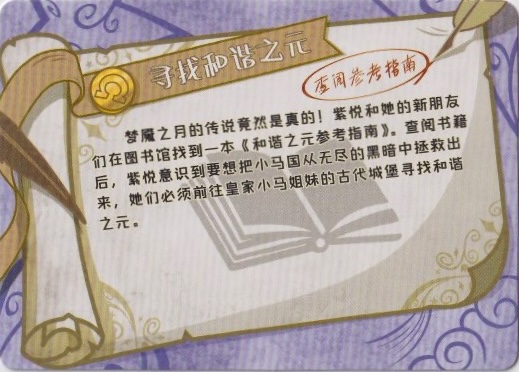
The core narrative engine of the game. Your deck includes multiple Story cards with sequential Roman numerals (I, II, III, IV…) that form an arc. In the Twilight Sparkle deck, these follow her quest to rediscover the Elements of Harmony, from discovering the reference guide, to confronting Nightmare Moon, and ultimately reigniting the sixth Element.
Each Story card has effects that trigger when played. For example:
- “Read the Reference Guide” (I): Draw 1 card.
- “Into the Everfree Forest” (II): Draw 2 cards and discard 1.
- “Confront Nightmare Moon” (III): Retrieve an event card from the Rest Zone.
- “Ignite the Sixth Element” (IV): If completed, you win the game immediately.
🟦 Item Cards
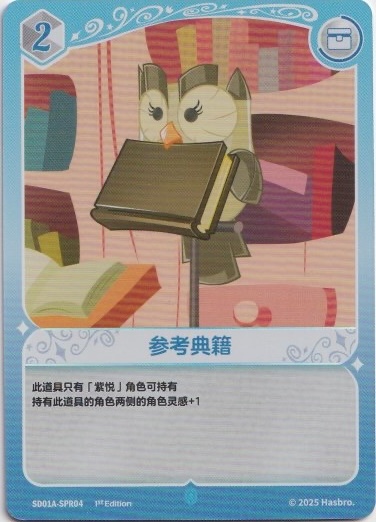
Equipable gear or boosts. Some are limited to certain ponies. For example, the “Reference Guide” card can only be used by Twilight Sparkle and boosts her stats during exchanges.
🟨 Scene Cards
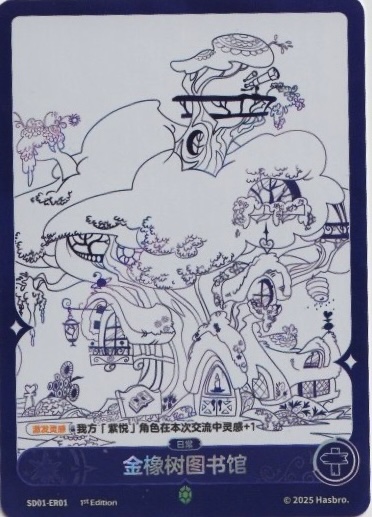
Locations that impact card abilities, like giving Twilight +1 Wisdom while at the Golden Oak Library. These cards stay on the field and influence multiple turns.
Gameplay Loop
- Draw Phase – Draw 1 card per turn.
- Main Phase – Play characters, items, or scenes. Some abilities trigger here.
- Exchange Phase – Resolve interactions between characters (like skill checks or combat).
- End Phase – Clean up and pass turn.
Story cards are advanced one by one as you meet their conditions. When you complete the final Story card’s challenge, you win.
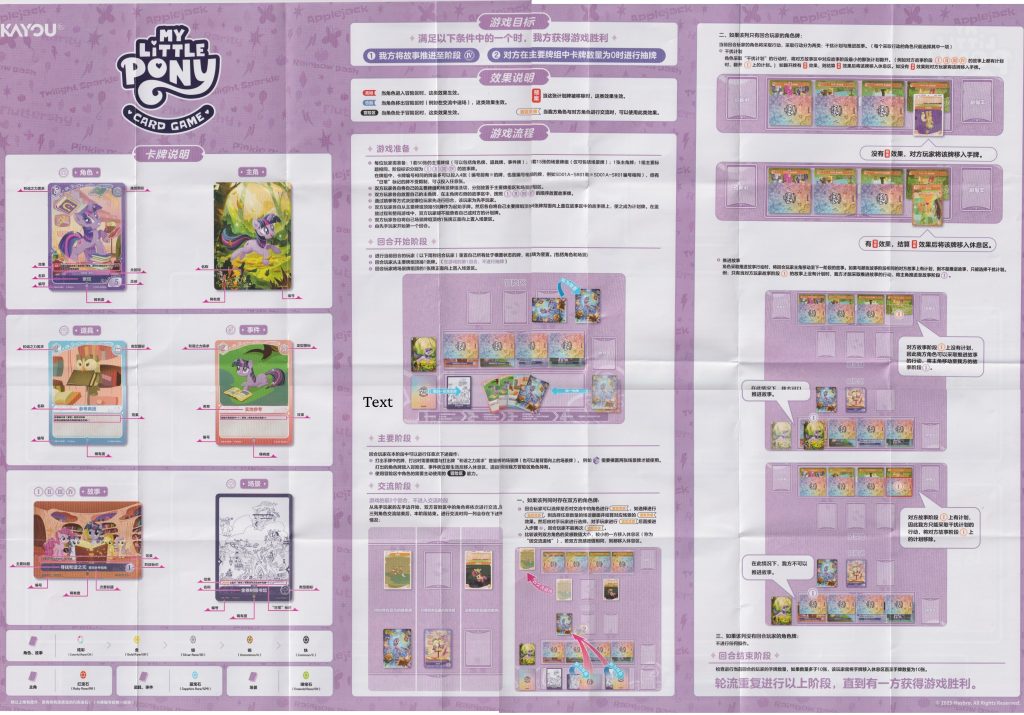
Language Barrier Tips
Most card effects are short and repeatable, and you’ll quickly learn what the icons and stat blocks represent. I recommend sleeving cards and keeping a printed translation sheet for reference. Many keywords and names are transliterated directly, and visual cues help a lot.
You can also reference the full rulebook translation I created or join the discussion on our community Discord.
Final Thoughts
Kayou’s My Little Pony TCG is absolutely charming, with story-driven gameplay that’s deeper than you might expect. The mechanics encourage teamwork, planning, and resource management. The story cards make it feel like you’re progressing through an actual episode, and the art and card quality are top notch.
Even without English localization, the game is 100% playable with a bit of help. If you’re a fan of MLP or just want a new collectible game to explore, I highly recommend giving it a shot.
More updates coming soon as I open booster packs and explore the other starter decks!
